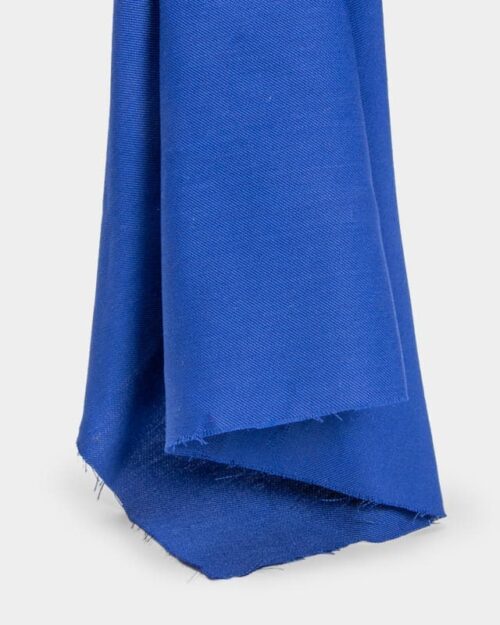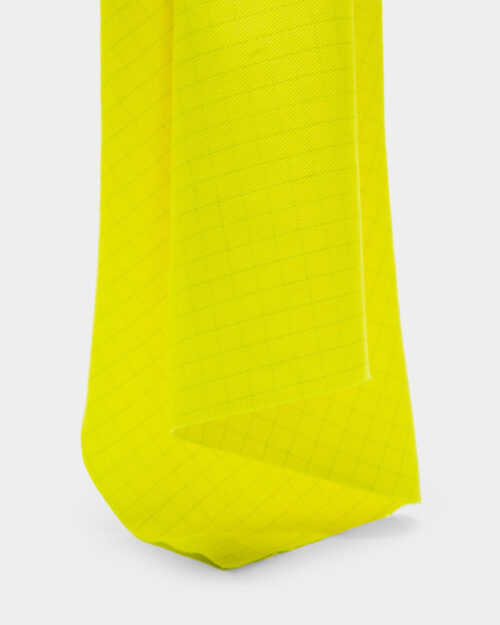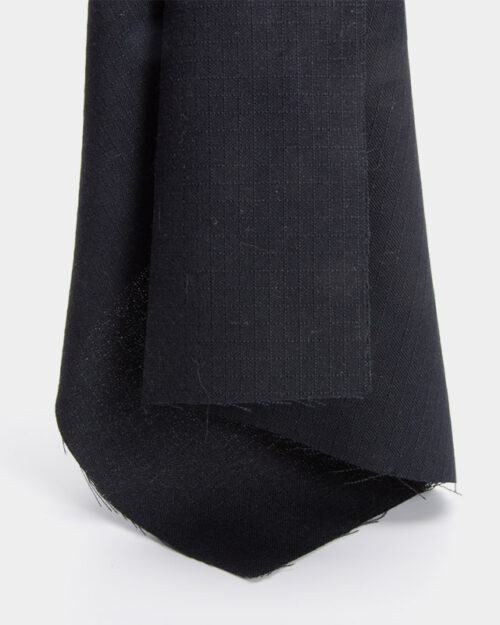Tissu FRStaticGuard®
Le tissu antistatique est un type de textile conçu pour empêcher l'accumulation d'électricité statique. Il est couramment utilisé dans les usines de fabrication et les salles blanches pour protéger les équipements électroniques sensibles.
Qu'est-ce qu'un tissu antistatique ?
Le tissu antistatique, également appelé tissu antistatique, est un matériau qui empêche l'accumulation d'électricité statique. Ses propriétés antistatiques reposent sur deux mécanismes : la dissipation et la neutralisation des charges.
Lorsqu'un objet est relié à la terre, l'électricité statique présente sur le tissu est neutralisée par la décharge corona des fibres conductrices, et toute électricité statique résiduelle peut être dissipée vers la terre via les fibres conductrices. Si les fibres conductrices ne sont pas reliées à la terre, la faible décharge corona peut néanmoins dissiper l'électricité statique.
Risques de l'électricité statique
Effets de la performance du port sur les vêtements
L'électricité statique générée par les vêtements composés de différents matériaux peut les emmêler, les rendant inconfortables. Lorsque les vêtements et la peau ont des charges électriques opposées, ils peuvent adhérer les uns aux autres, rendant la marche difficile.
Causes des accidents accidentels
Le port de vêtements synthétiques peut générer une grande quantité d’électricité statique, qui peut s’accumuler à la surface des vêtements. La charge statique accumulée peut produire des étincelles en brisant l’entrefer. L'énergie des étincelles est suffisante pour enflammer les gaz inflammables et explosifs à proximité, provoquant des incendies, voire des explosions.
Impact sur la qualité des produits textiles
Pendant le processus d'ouverture des fibres lâches, l'électricité statique fait adhérer les fibres lâches au châssis de la machine, aux pipelines et à d'autres surfaces. Cela entraîne une épaisseur inégale de la couche de fibres de sortie et entraîne également des difficultés de production dues à l'enchevêtrement, à la compression et au laminage.

Industries utilisant des tissus antistatiques :

LABORATOIRES

CHAMBRES PROPRES

ZONES ATEX

AUTOMOBILES
Principes des matériaux textiles antistatiques :
Il existe généralement deux manières de générer de l’électricité statique :
1. Électricité statique générée par contact.
2. Électricité statique générée par induction.
L'électricité statique générée par contact est principalement due au mouvement des charges. Lorsque deux objets entrent en contact et se frottent l'un contre l'autre, la surface de l'un commence à accumuler des charges positives, tandis que celle de l'autre se charge négativement, ce qui produit de l'électricité statique.
L'électricité statique générée par induction se produit lorsqu'un matériau conducteur est à proximité d'un conducteur ou d'un isolant. Des charges s'accumulent du côté conducteur ou isolant le plus proche du matériau conducteur. Après une période prolongée d'induction, les charges positives et négatives du conducteur ou de l'isolant se séparenttel, ce qui entraîne la production d'électricité statique.
Ces deux cas peuvent être qualifiés d'effet de transfert de charge. L'antistatique désigne la capacité d'un tissu antistatique à minimiser l'effet de transfert, à prévenir l'accumulation d'électricité statique, à réduire la friction ou le contact avec le produit et à prévenir l'accumulation d'électricité statique. Voici trois méthodes couramment utilisées :
Méthodes antistatiques pour textiles
Les méthodes de traitement antistatique des textiles consistent principalement à augmenter la conductivité des fibres et à améliorer l'humidité du milieu ambiant. La méthode la plus simple et la plus importante consiste à réduire la résistance électrique des fibres et à augmenter leur conductivité. Il existe trois principales méthodes de traitement antistatique des textiles :
Traiter les tissus avec des agents antistatiques ; Modification des fibres par greffage de groupements hydrophiles, mélange ou entrelacement avec des fibres hydrophiles; Mélange ou entrelacement avec des fibres conductrices.
Les mécanismes des deux premières méthodes consistent à augmenter l'absorption d'humidité du tissu, à diminuer son isolation et à accélérer la dissipation de l'électricité statique. Par conséquent, leurs effets peuvent ne pas être durables ou significatifs dans des environnements secs ou après des lavages répétés.
La troisième méthode permet de résoudre de manière permanente et efficace le problème de l'électricité statique dans les textiles. Il peut être utilisé pour des vêtements fonctionnels spéciaux, tels que des vêtements de travail antistatiques.

Production de fibres et tissus antistatiques
1. Méthode antistatique externe
La méthode de fixation d'agents antistatiques externes à la surface des fibres est connue sous le nom de traitement de surface, qui peut être classé en méthodes de traitement antistatique temporaires et durables.
(1) Traitement antistatique temporaire. Généralement, des méthodes externes de pulvérisation, d'imprégnation et de revêtement sont utilisées pour éviter les interférences statiques pendant la fabrication et le traitement des fibres.
(2) Traitement antistatique durable. Ce traitement est obtenu en attirant des ions de charge électrique opposée à la surface des fibres par réticulation thermique ou par adhésion à une résine. Il en résulte une certaine durabilité, une résistance au lavage et au frottement, ainsi que d'autres propriétés.
2. Méthode antistatique interne
Les trois méthodes suivantes sont utilisées pour incorporer des agents antistatiques dans les fibres :
(1) Modifier le polymère de fibre avant de filer. Habituellement, les composés hydrophiles sont copolymérisés avec des monomères fibreux avant le filage.
(2) Utilisez une méthode de filage mixte pour mélanger le polymère avec des agents antistatiques, ou utilisez une méthode de filage composite.
(3) Enduisez la surface de la fibre avec un métal conducteur ou du noir de carbone (qui fait en fait partie du traitement de surface), ou utilisez le filage composite pour produire des fibres antistatiques contenant du noir de carbone.

Avantages du tissu antistatique BEGOODTEX :
Haute conductivité et performances électrostatiques supérieures. Les fibres métalliques aussi fines que 6,5 µm ont une excellente conductivité, dissipant efficacement les charges statiques.
Agréables à porter, les fibres et fils ultrafins et ultradoux se fondent parfaitement dans les vêtements, maintenant un haut niveau de confort.
Excellentes propriétés de lavage Même après plusieurs lavages industriels, les caractéristiques et les performances antistatiques des vêtements ne changeront pas.
Prévenir les dysfonctionnements des instruments électriques en dissipant les décharges électrostatiques est essentiel pour protéger divers équipements électriques des effets néfastes des charges statiques.
Longue durée de vie : une excellente durabilité augmente la longévité du tissu.
Applications des tissus ignifuges inhérents ( IP ) + antistatiques

1. Industrie électronique : Les tissus antistatiques sont largement utilisés dans les vêtements de travail et les gants des ateliers de production afin de prévenir les interférences statiques pendant le processus de production. Ils protègent également les composants électroniques des risques d'électricité statique, garantissant ainsi leur qualité et leur stabilité.
2. Médical et santé : les tissus antistatiques sont utilisés dans les blouses chirurgicales, les bonnets chirurgicaux, les couvre-chaussures chirurgicales, etc. Ces produits peuvent réduire efficacement le problème d'accumulation de charge statique.
3. Industrie pétrochimique : Les tissus antistatiques peuvent être utilisés dans l'industrie pétrochimique pour les équipements de protection tels que les vêtements, les gants et les couvre-chaussures antistatiques afin d'atténuer les incendies et les explosions déclenchés par l'électricité statique.
4. Aérospatiale : Les tissus antistatiques peuvent être utilisés dans l’industrie aérospatiale pour les équipements de protection tels que les vêtements, les gants et les couvre-chaussures antistatiques afin d’éviter les interférences statiques et les dommages.
5. Industrie électrique : Les tissus antistatiques peuvent être utilisés dans l’industrie électrique pour les équipements de protection tels que les vêtements antistatiques, les gants et les couvre-chaussures afin de prévenir les incendies et les explosions déclenchés par l’électricité statique.
6. Fabrication automobile : les tissus antistatiques peuvent être utilisés dans l'industrie automobile pour les équipements de protection tels que les vêtements de travail et les gants afin d'éviter les interférences statiques et les dommages aux équipements électroniques automobiles.
Produits relatifs
-
Chemise Henley ignifugée en aramide IIIA certifiée NFPA 2112, prix direct usine
-
-
#0302 Gris#0602 Rouge#0702 Orange
-
L : 150 cm | Poids : 280 g/m²BG-L19-901
-
L : 150 cm | Poids : 200 g/m²
Tissu antistatique ignifuge Aramide 1414 200 g/m², textile de protection noir
BG-L51-101 -
L : 150 cm | Poids : 160 g/m²
Tissu industriel antistatique noir Aramide 1414 160 g/m²
BG-L50-101 -
L : 150 cm | Poids : 150 g/m²
Tissu antistatique ignifuge Aramide 1414 150 g/m², tissu léger noir
BG-L49-101 -
L : 150 cm | Poids : 200 g/m²
Tissu antistatique ignifuge noir en aramide 1414 200 g/m² pour vêtements de travail industriels
BG-L48-101 -
L : 150 cm | Poids : 200 g/m²#1102 Bleu#1103 Bleu foncéBG-L43













